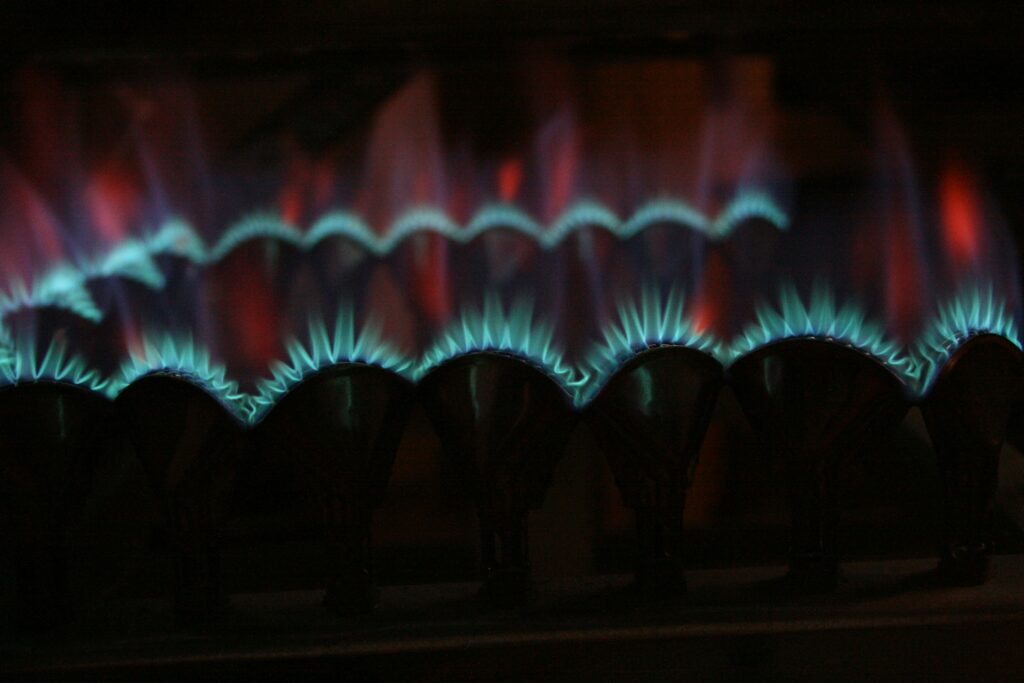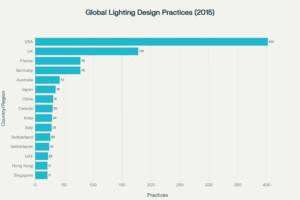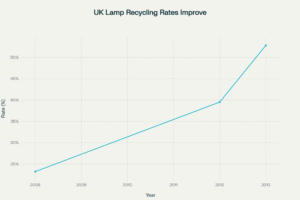When a major retail chain replaced 10,000 fluorescent fixtures with “budget-friendly” LED lights, they thought they’d struck gold.
Six months later, they were facing a crisis: flickering displays, customer complaints about harsh lighting, and maintenance costs that had somehow doubled.
The culprit? They’d focused solely on upfront savings while ignoring three critical factors that separate professional-grade LED systems from expensive disappointments.
This short guide sets out clear metrics to specify the right product for a commercial site. We concentrate on luminous efficacy, wattage, colour and lifetime so you avoid over‑lighting and hidden costs.
We explain the new energy rating and why many high‑performing products now sit lower on the A‑G scale despite still cutting consumption versus incandescent bulbs. We show simple examples—like swapping a 60 W incandescent for a 6.5 W led bulb—to make savings visible to finance and maintenance teams.
Next, we cover thermal design, label basics and how modular, refurbishable products protect your investment and reduce bills over years. Read on to get practical, commercial advice you can use on site.
Foundations of commercial LED performance: metrics that matter for energy, quality and value
We translate manufacturer metrics into things you can act on. Lumens measure total visible light output, while wattage shows electrical draw. The ratio between them — luminous efficacy — lets you compare products fairly.
To reach A on the new UK A‑G energy rating a product must achieve at least 210 lumens per watt. Many strong products now sit in D because the thresholds moved, not because performance fell.

Look for kWh/1000h on the label to convert specs into predictable operating costs. Check Kelvin, CRI (Ra), beam angle, dimmability and outdoor rating too; these affect task performance and user comfort.
Lifetime is about service, not just hours. Use L70/B figures to plan maintenance. A 50,000 h rating often equates to a decade in commercial schedules and cuts call‑outs and spare stock.
- Compare by lumen output and efficacy, not by headline watt numbers.
- Request photometric files and declared system data to avoid surprises on site.
- Mind thermal and driver windows—temperatures drive real‑world performance and longevity.
How to specify high‑performance luminaires: Lumenloop’s practical checklist for maximum LED lights efficiency
Start by defining the room’s purpose; the right product follows from the task, not the catalogue.
We give a field‑ready checklist grounded in manufacture and service. Use declared data to lock in performance and future value.
- Match task and space: set target illuminance and uniformity, then pick optics for beam control. This prevents oversizing wattage and keeps bills down.
- Set efficacy by use case: aim for high lumens per watt in warehouses; accept a trade‑off for hospitality where colour and dimming matter.
- Colour and comfort: specify Kelvin and high CRI (Ra) where colour rendering affects tasks and wellbeing.
- Controls as standard: daylight sensors, presence detection and tuning give repeatable savings and reduce energy consumption over time.
- Thermal and drivers: demand robust heatsinks, roomy driver space and conservative current to protect output and warranty.
- Validate with data: insist on kWh/1000h, photometric files and declared test conditions to separate marketing from measurable savings.
- Plan lifecycle: choose refurbishable products so boards, drivers and optics can be replaced, lowering waste and long‑term cost.
- Benchmark the label: if a product cannot reach 210 lumens per on the new energy rating, ensure real‑world performance and control strategy still deliver value.
LED lights efficiency: separating physics from marketing and planning for real‑world savings
Numbers alone won’t save energy or money—system design and verified data do.
Realistic limits: why 500 lm/W claims are not feasible and what 200–250 lm/W could look like
The photopic maximum sits at 683 lm/W at 555 nm. For warm white sources the theoretical module cap is nearer 320 lm/W.
Practical conversion of electrical power into visible light sits around 40–50% today. That makes 500 lm/W for white light physically impossible. A whole‑system target of 200–250 lm/W is a realistic future benchmark.
System thinking: from LED package to luminaire and site—avoiding losses and inflated figures
Package data rarely survives the luminaire. Optics, driver losses and heat all reduce delivered lumens. We urge teams to read declared luminous efficacy, kWh/1000h and full photometry before awarding a spec.
- Read the whole system: compare package vs luminaire vs measured output.
- Validate claims: ask for photometric files and test conditions.
- Measure post‑install: metered checks prove savings and protect budget.
| Stage | Typical loss | What to check |
|---|---|---|
| LED package | Driver conversion (~5–10%) | Package lm/W, test current |
| Optics & thermal | Optical and heat losses (10–25%) | Photometry, Tc point, lumen maintenance |
| Site & controls | Mounting, reflectance, control strategy (variable) | Layout, sensors, maintenance plans |
We back our claims with system test points so procurement can make a confident choice. In practice, good controls, right‑sizing and refurbishment deliver faster, 31 than chasing headline numbers.
Quick Recap
Here are the pragmatic next steps to turn specification into measurable savings on site.
Prioritise luminous efficacy, clear rating data and lifecycle design so you protect value and cut maintenance costs.
Use kWh/1000h and photometric files to compare real consumption. Set colour, wattage and controls to match the task so bulbs perform and bills fall.
Plan a short pilot: we will validate baselines, tune controls and prove money savings in months not years.
Choose a refurbishable spec and a controls strategy that lets you upgrade modules as led packages and drivers improve—raising system efficacy towards future targets while keeping products in service.
Get in touch to model, specify and deliver the right light, right energy, right now.
FAQ
What do lumens and watts tell us about a lamp?
Lumens measure visible light output; watts measure power draw. Luminous efficacy — lumens per watt — links the two and shows how much useful light you get for each watt consumed. When specifying for commercial spaces we aim for high lumen output with the lowest practical wattage to cut running costs and bills.
What does the new UK A–G energy rating mean for products?
The updated rating groups products by actual performance. An A rating now typically means around 210 lumens per watt or better at system level. That helps us compare fixtures on a like‑for‑like basis and avoid claims that only apply to the LED package, not the whole luminaire.
How should we interpret lifespan figures such as L70 or B10?
L70 indicates the number of hours before light output falls to 70% of initial lumen level; B10 is the point where 10% of units have failed. Use these alongside warranted hours and real‑world maintenance intervals to calculate replacement schedules and total cost of ownership.
Are extremely high efficacy claims, like 500 lm/W, realistic?
Not for complete luminaires in commercial use. Package‑level cells can show very high figures under lab conditions, but system losses from optics, drivers and thermal factors reduce that. Expect practical top‑end performance in the 200–250 lm/W range for advanced systems.
What causes the gap between LED package numbers and installed performance?
Losses occur in the driver, optic, thermal path and mounting. Dust, temperature and control gear further reduce delivered light. A system‑level approach — comparing kWh/1000h, photometric files and real test data — gives realistic savings projections.
How do we pick the right lumen level for a workspace?
Start with recommended illuminance for the task: for example, general office 300–500 lux, retail 500–1000 lux, warehouses 100–200 lux. Then choose beam control and uniformity to avoid glare and wasted light. We always specify to the task, not to the highest lumen number available.
What role does colour quality play in commercial specification?
Colour temperature (Kelvin) affects mood and perception; CRI or Ra measures colour rendering. For most workplaces we recommend 4000K with CRI ≥80, higher CRI for retail or design spaces. Human‑centric schemes may use tunable colour to support wellbeing and productivity.
How much energy can controls and dimming realistically save?
Daylight harvesting, presence detection and time‑based dimming typically yield 20–60% additional savings beyond fixture efficiency, depending on occupancy patterns. Proper commissioning and simple scenes maximise those gains and reduce run hours.
What should specification documents request from manufacturers?
Ask for system efficacy (lm/W) at the luminaire level, kWh/1000h, IES/PLF files, lumen maintenance data (Lx/Bx), driver details, warranty terms and verified energy‑rating class. Insist on third‑party test reports to avoid overstated performance.
How do thermal design and driver quality affect long‑term value?
Good thermal management keeps diodes cool, preserving lumen output and lifespan. High‑quality drivers reduce flicker and failures. Together they protect warranty validity and lower lifetime maintenance and replacement costs.
What are common pitfalls when estimating savings?
Common errors include using peak package efficacy, ignoring loss factors for optics and controls, and failing to model actual operating hours. We base projections on measured kWh, realistic maintenance cycles and site‑level photometry to avoid inflated claims.
How do we balance initial cost against long‑term savings?
Evaluate total cost of ownership: purchase price, installation, energy consumption, maintenance and disposal. Often a slightly higher upfront spend on better thermal design, controls and serviceability pays back in reduced bills and fewer replacements.
What documentation proves a product’s claimed performance?
Look for accredited photometric reports (IES/PLF), lumen maintenance test reports, energy‑rating certificates, and kWh/1000h data. Third‑party verification from recognised labs gives the confidence needed for commercial projects.












